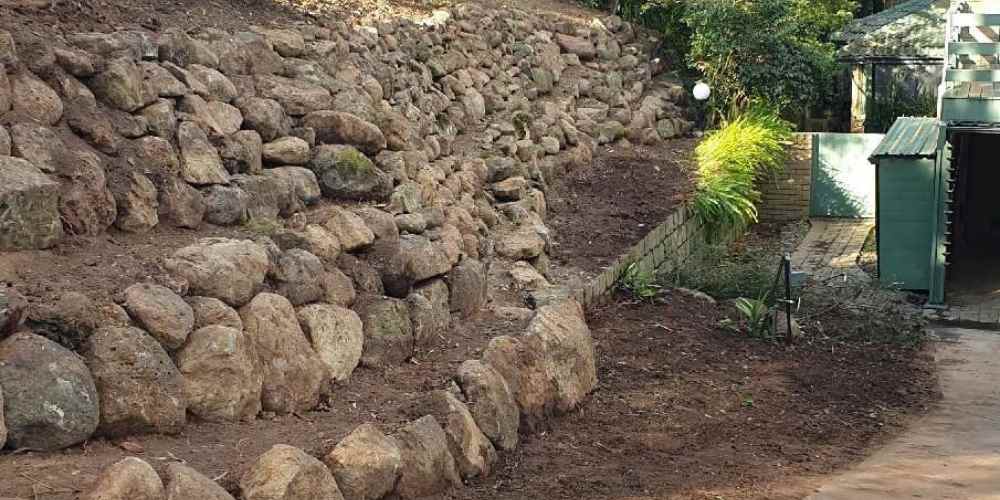Gabion Retaining Walls
Gabion is a wall-building technology that dates back thousands of years. This unusual term comes from the Italian word “cage,” which characterizes the wall’s fundamental construction. The cage is made of wire or wire mesh that is filled with stones or debris and does not require any construction or specialized work.
Cages were originally built of braided willow wattle, which looks like a big basket. These were built to shield soldiers or artillery in ancient wartime circumstances up until the American Civil War. Gabion walls are making a resurgence as a green alternative to rock, using crushed recycled concrete and other waste materials instead.
Gabion walls are structurally unique, allowing them to be built in nearly any configuration due to the materials’ flexibility. They were originally utilized as retaining walls in conjunction with waterways, and they may now be quite important to coastal and riverbank residences. The gabion wall works to keep banks and soil layers together with a single, somewhat flexible mass of enormous weight when there is a risk of heavy flood. A gabion retaining wall may move with the ground to maintain its integrity despite the ravages of rapidly running water, unlike block or concrete, which is solid construction. These are less vulnerable to eroding and are commonly employed in bank and shore protection.
In This Article
Table of Contents

A Greener Retaining Wall Method
Gabion retaining walls are a green solution to bank erosion since they are made of recycled concrete. Their flaw is the wire basket’s durability, which can rust away if exposed to the correct temperatures. Retaining wall builders can now make the structures last longer thanks to advances in wire technology, coatings, and other materials.
A Gabion Wall Will Mould Into The Landscape
At first glance, a gabion retaining wall appears to be a more porous construction, allowing runoff to flow freely rather than being pushed around the end of a solid wall. With each passing year, earth particles push their way into the cracks between the debris, making them more solid. Because of the soil accumulation in surface gaps, they are ideal for landscaping because they can support plant life. Older gabions can support a thriving colony of native plant volunteers who prefer the higher places to cliff-face nooks and crevices. In a natural plant community, a gabion left to colonization might essentially vanish over time.
Gabions can also be used with decorative plants to create a live retaining wall that is less obtrusive than concrete or block. Plant roots, which bind the stones together and may one day keep the wall in place, can help the wall last for decades. However, sedimentation will occur as a result of water flowing through the gabion early in its existence. Because of this issue, they are frequently ruled out for domestic use.
Gabion retaining walls can be built in steps or in a long, flexible sloping curve, but they all have a noticeable batter. The lowest tier requires a large amount of ground plane, which limits its use on locations with limited space. When the room is available, this is a more cost-effective option, especially when recycled or locally sourced fill is employed. Gabion walls, in fact, maybe a great fit for local landscaping rocks, resulting in a more visually cohesive design.
